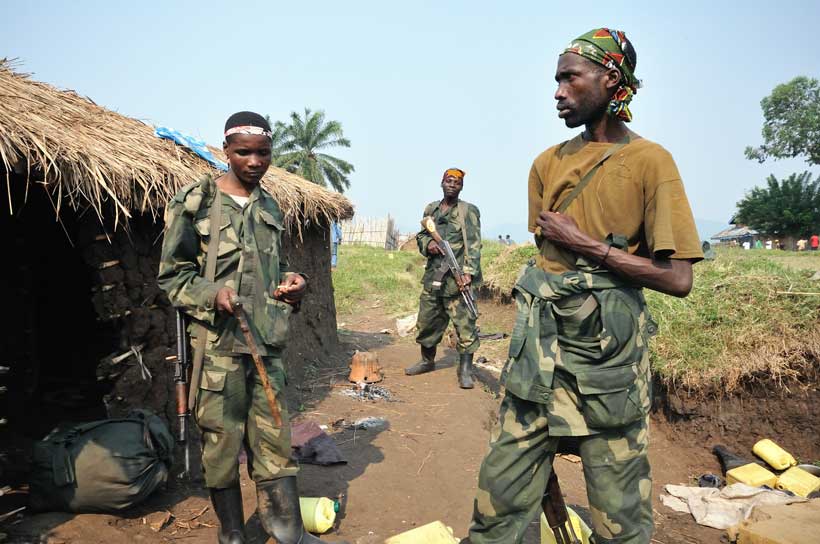In Central Africa, The Democratic Republic of Congo, is once again facing an escalating conflict between the government forces and the March 23 rebel movement. This paramilitary group has established itself along the border with Rwanda, in North and South Kivu provinces, displacing millions of people in the process. Recent U.S. and Qatari peace initiatives, such as the peace treaty signed on June 27th 2025, have stalled, and both sides continue fortifying their positions in a war.
U.S. President Donald Trump claimed he has already ended. However, situations like these are not new to the region. Modern Congo’s instability is rooted in the 1994 Rwandan genocide, which apart from the millions of civilian casualties, sent Hutu militias across the border. Three decades later, external mediation continues to produce peace accords without addressing the mistrust and underlying causes that drive these types of conflicts.
The Heart of the Conflict: A War for Minerals
At the core of this conflict is Congo’s mineral wealth. The aforementioned provinces produce important resources such as coltan, tin, and gold; U.N. investigators have shown that these minerals are routinely smuggled into Rwanda, from where they later enter international markets. M23 controls both the mining sites and the supply chains across the borders, creating a lucrative system for financing this conflict. For Rwanda, supporting or at the very least “tolerating” M23 provides access to resources while allowing the government to deny formal involvement, at least on paper.
For the DRC, the loss of mines and territory is not only an economic setback but also a state sovereignty problem. For outside powers, the minerals are what raise the stakes. For example, the United States has signalled interest in securing stable supply chains, while China already dominates Congo’s mining sector.
A Local War with Global Repercussions
Congo is one of the most resource-rich areas on the planet, so the conflict is therefore not simply a Congolese problem. These minerals feed directly into supply chains for electronics, batteries, and renewable technologies. It is a contest over who controls access to these resources that help power the global economy.
Multiple rounds of negotiations have failed because they do not address the root of the issues that sparked this conflict: For the DRC, President Félix Tshisekedi cannot politically afford to concede to power-sharing or to release hundreds of war-prisoners without appearing weak domestically.
On the other side, the M23 demands exactly this: political concessions and prisoner releases before talks advance, knowing their military leverage and control over large territories gives them bargaining power.
The Proxy Strategy and Superficial Mediation
The conflict is not contained within Congo’s borders. Externally, Rwanda is using a proxy strategy; Here, Kigali can influence the conflict directly while denying responsibility, undermining any national or international accountability. American and Qatari meditation is often rushed, prioritising quick wins that can satisfy international pressure and can make headlines over sustained trust-building for the two sides involved in the conflict.
The Limits of External Power
For the United States, the conflict has broader significance. Beyond general humanitarian concerns, Washington is trying to counter- balance China’s increasing dominance in African resource markets. However, we must note that even U.S. diplomacy faces its limits. Without enforcement power on the ground, external pressure alone cannot force concessions; especially from actors who benefit from maintaining the status quo for as long as possible, while the money is pouring in.
The Trajectory: Escalation and Empty Concessions
This means, unfortunately, the widely accepted short-term trajectory points to further escalation of the conflict. Both sides are consolidating their positions in strategic points such as Uvira and Walikale. While the weakened Congolese army is leaning on foreign contractors to hold the territory they currently occupy, the M23, has been reinforced with thousands of new recruits, and appears determined to maintain and expand their control zone.
In the medium term, renewed U.S. pressure on Rwanda may yield some tactical concessions, such as temporary withdrawals or limited prisoner exchanges. But without mechanisms written on paper to enforce compliance, these are nothing but band-aid type solutions at best. The long-term outlook is even more uncertain. As long as eastern Congo’s minerals provide financing for armed groups and external actors see strategic value in influencing the conflict, peace remains unlikely.
The crisis is a case study, showing us the limits of external mediation when the underlying root- causes of the conflict remain unresolved. Minerals, historical mistrusts, and proxy-war dynamics have made peace agreements fragile and implementation even more so. It is undeniable that the humanitarian cost is rising, with millions of people displaced. Even so, the international diplomacy outlook is more focused on short-term “prestige” deals for first-world leaders, and economic incentives rather than concrete solutions. For Congo itself, the stakes are much more pressing, territorial integrity, sovereignty over their own resources, and protection of civilians. To put in bluntly, until these dimensions are confronted directly, the eastern Congo conflict will remain locked in a cycle of violence, where global attention will continue to arrive only briefly and superficially in the most difficult of times.
